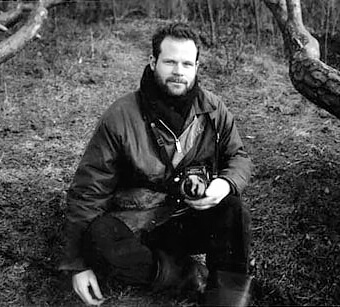Kristoffer Albrecht is a Finnish photographer, born in Helsinki, Finland in 1961. Albrecht lives in Ingå, Finland, and works as an independent photographer. His photographic work has been exhibited in his native Finland and internationally.
Albrecht's work can be seen in collections at Helsinki’s Finnish Museum of Photography, Stockholm’s Moderna Museet, Moscow’s Pushkin Museum,
Bibliothèque Nationale de France in Paris,
Metropolitan Museum of Art in New York, and more.
Albrecht has published some 30 books, among them
Metropol (1998),
Memorabilia (2004) and
ZigZag in Europe (2009). Kristoffer Albrecht is represented in art museums and other public collections in Finland, France, Germany, Russia, Sweden, USA.
Kristoffer Albrecht has been exhibiting both at home and abroad since 1983. Previously mentored by acclaimed Finnish photographer
Pentti Sammallahti, Albrecht exhibited alongside Sammallahti at in the Print Sales Gallery in 2017. Near the Wind showcased a collaborative body of work specially commissioned by The Photographers’ Gallery.
Albrecht has exhibited in solo and group shows across Finland, Russia, Demark, France, Spain and the US since 1983, and his works can be found in international public collections including the Finnish Museum of Photography, Helsinki, the Bibliothèque Nationale de France, Paris, the Metropolitan Museum of Art, New York, the Modern Museet, Stockholm and The Pushkin Museum, Moscow.
Making photobooks is an important means of his artistic expression; to date Albrecht has published some thirty photobooks, most recently
Domestica (2018). He has been teaching photography and also conducting research in the field for several decades.
Source: Invaluable
